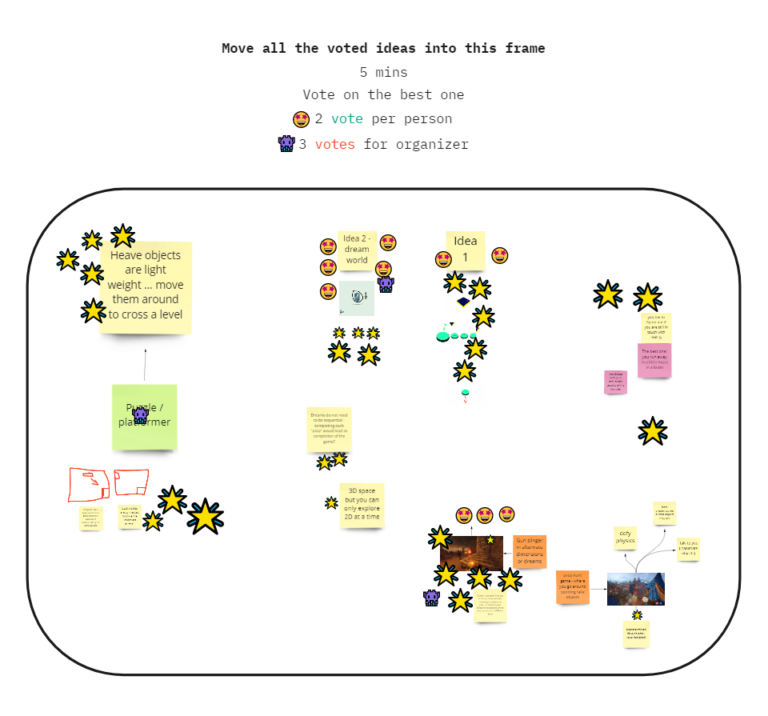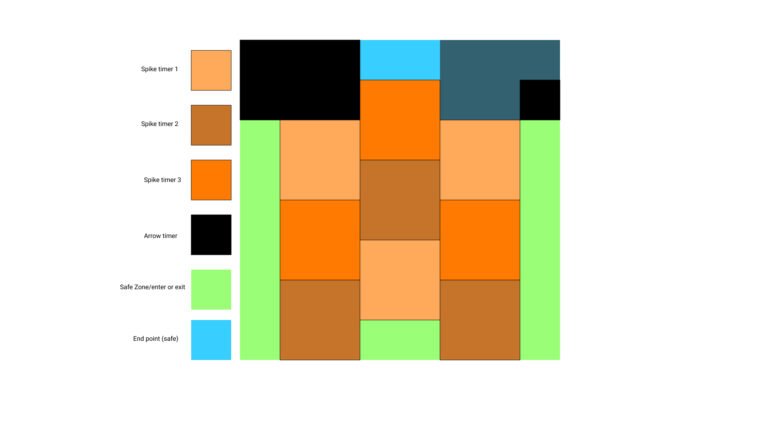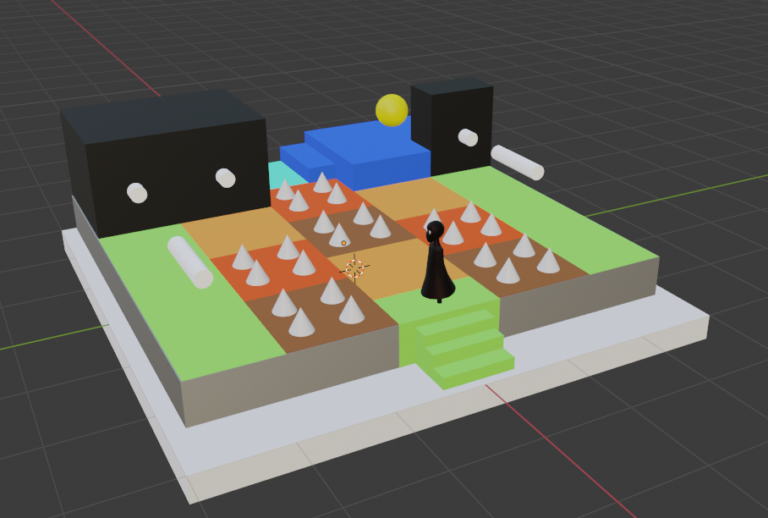About Dream Catch
Dream Catch was a part of the Brackeys game jam in February 2022. My role as a level designer was to design 4 game puzzles, script blueprints, character animations, and basic blender modeling.
Game concept
Collect key artifacts and bring them back to your bed so that you can escape the lucid dream and sleep again. The More objects you bring back, the more points you can score. Avoid the holes and spikes!
https://youtu.be/dGttDeJBQN8
Brainstorming
Created a brainstorming and concept creation session for the team in miroboard based on previouse UX experience. We created a game concept around the theme “it’s not real”. With voting rounds on game idea and mechanics.






Previous
Next
Low Fidelity
As a level designer, I got to create puzzle tiles fitting for the programmer’s procedural level system. Each tile/puzzle is 3×3 in size consisting of a 100 grid size. In total, a tile would be as big as a 300 by 300 grid size. I worked on creating the sketches in Figma and recreating them in 3D with blender and unreal engine. Bad practice to continue creating the puzzles in blender as I was too slow in prototyping in the blender environment. I decided to keep making them in an Unreal engine actor blueprint, making prefabs out of the tiles to be reused by programmers in the spawn system.



Previous
Next
High Fidelity
Created 4 puzzles. Some puzzles only consist of static objects and other puzzles have moving objects such as spikes. I created a blueprint for the spikes to emerge from the ground and back into the ground based on the world located inside the puzzle actor and a timer.

High Fidelity prototype from Sketches. The red color indicates the tile spawning platform and everything above in blue indicated the puzzle. The puzzle would only be deemed good to solve if the object inside was the objective to collect based on the mission objective.
https://www.youtube.com/watch?v=n2LgVacTdQ8&feature=youtu.be
Generalist
Apart from level designing puzzles I also created a cel shader to imitate cartoonish looks based on a youtube video tutorial. I also made sure the character animations worked with walking and jumping states. Lastly, I also created a scoring and saving system in blueprints but unfortunately, it did not make it into the last iteration of the game as time was up.


Previous
Next
Itch.io